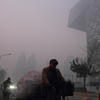Economy and Policy
2008
Mar
28
2008
Mar
25
. 2016. Energy and Climate: Vision for the Future. 1st ed. New York: Oxford University Press. Publisher's VersionAbstract
2017
Apr
06
2017
Mar
23
Op-Ed in Fortune by Ho and Nielsen on China's Red Alert Pollution Struggles
2017
Feb
08
. 2009. “China's 11th Five-Year Plan and the environment: Reducing SO2 emissions.” Review of Environmental Economics and Policy, 3, 2, Pp. 189-208. Publisher's VersionAbstract
. 1999. “Controlling carbon emissions in China.” Environment and Development Economics, 4, 4, Pp. 493-518. Publisher's VersionAbstract
. 2007. “Summary for policy.” In Clearing the air: The health and economic damages of air pollution in China, . Cambridge, MA: MIT Press. Publisher's VersionAbstract
. 2013. “Summary: Carbon Taxes for 2013-2020.” In Clearer Skies Over China: Reconciling Air Quality, Climate, and Economic Goals, Pp. 103-157. Cambridge, MA: MIT Press. Publisher's VersionAbstract
. 2009. “The local and global benefits of green tax policies in China.” Review of Environmental Economics and Policy, 3, 2, Pp. 231-250. Publisher's VersionAbstract
. 1998. “China’s economic growth and carbon emissions.” In Energizing China: Reconciling Environmental Protection and Economic Growth, . Cambridge, MA: HUCE/Harvard University Press. Publisher's VersionAbstract
. 2007. “The impact of lifestyle on energy use and CO2 emission: An empirical analysis of China’s residents.” Energy Policy, 35, 1, Pp. 247-257. Publisher's VersionAbstract
. 2013. “Op-ed: Clearing the air in China.” New York Times (Sunday Review), October 27 , Pp. SR4. Publisher's Version


